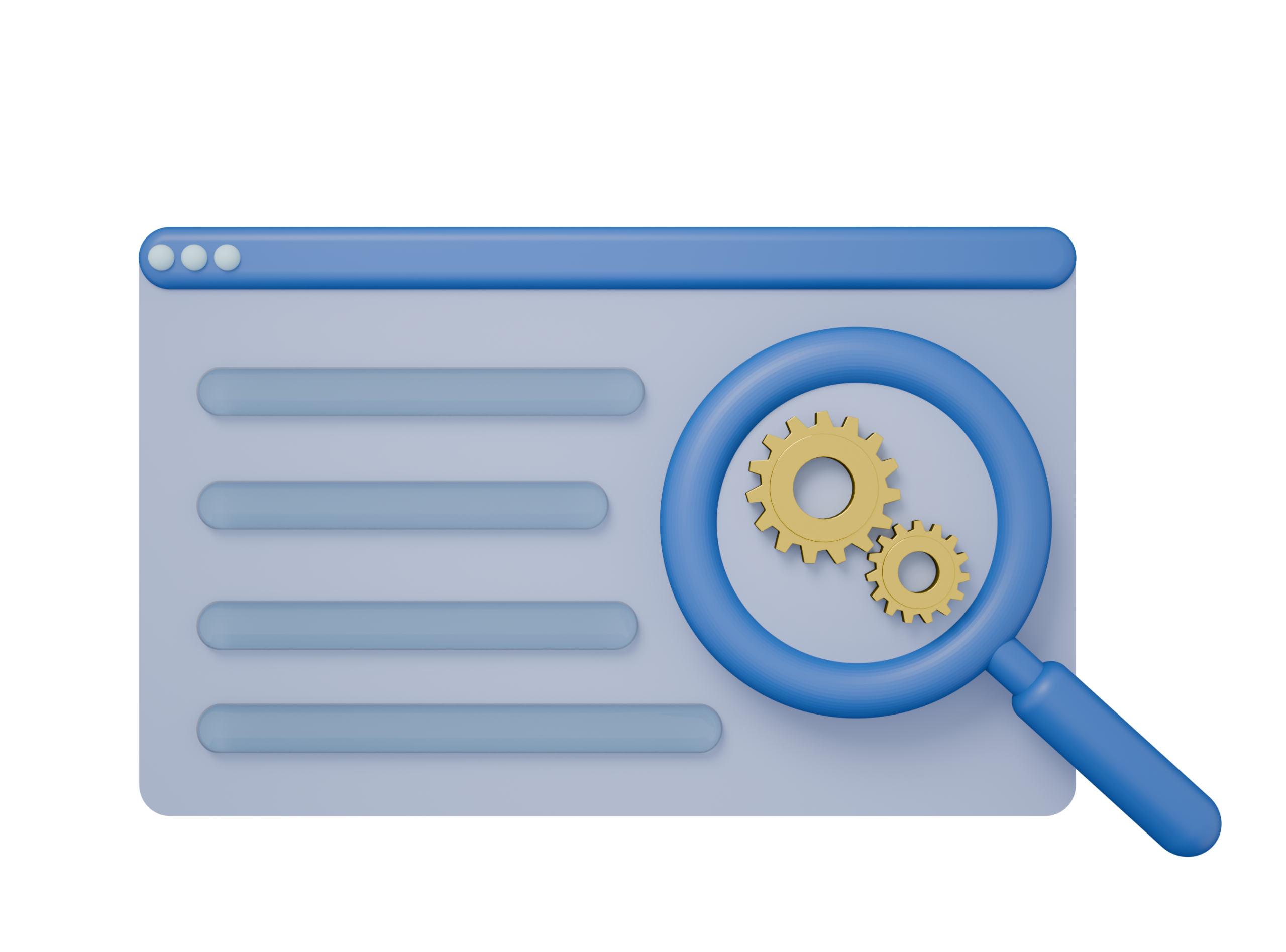You’ve made a cool website, the content is helpful, you’ve built non-shitty backlinks, but something’s still off.
The traffic isn’t improving, and you’re stuck on page who-knows-where.
Chances are, it’s a technical issue. Slow pages, broken links, messy site structure: stuff that search engines care about more than you think.
This is where a good technical SEO checklist can help. Plus, we’re sharing a free one which you can download and get started.
What is Technical SEO?
Technical SEO is the process of optimizing technical aspects of a website to improve rankings in search results.
When done right, it helps Google find your pages (crawling) and save them in its system so they can show up in search results (indexing) as long as they meet certain ranking criteria.
But why is technical SEO important? And, what happens when you overlook it? Failing to optimize your website technically leads to:
- Not appearing in search results at all
- Loss of traffic and visibility
- Fewer leads or sales
- Poor user experience
So, no matter how good your content is or how many backlinks you get every month. If your site is not working properly, your SEO won’t improve.
When and How Often to Run Technical Audits
Your website needs regular checkups. A technical audit is a must to catch issues early before they mess with your traffic, rankings, or user experience.
Here are a few signs it’s time for one:
- Drop in traffic or keyword positions
- Pages start getting deindexed (often because of 404 errors you didn’t even notice)
- You’ve just redesigned your website
- Google launched a big update, and your site starts acting weird
Now, how often should you run a technical audit? Short answer: regularly. Real answer: it depends on your site.
- If you run a SaaS website, performing technical SEO for SaaS once a month is usually enough.
- If you run an e-commerce website, every two weeks is safer. These usually have a bunch of pages and frequent updates, so small technical issues can pile up fast.
In short, don’t wait for disaster and make a technical SEO site audit part of your routine.
How to Conduct a Technical SEO Site Audit: Our Approach
Here’s a simple technical SEO audit checklist we use to keep SayNine’s and our clients’ websites working well.
Crawlability & Indexability
Find and Fix Broken Links
Broken links are links on your site that point to non-existent or dead pages.
What does it have to do with crawling and indexing? Let me explain.
When search engines crawl your site and find broken links, they get stuck. This can stop them from reaching other pages, which means some of your content might not get indexed at all.
In other words, you lose the opportunity to appear in search results and rank higher on Google.
So, what to do? We definitely recommend finding all broken links and fixing them using SEO tools like Ahrefs. Here’s how.
Step 1: Sign in to your Ahrefs account and head to Site Audit.
Step 2: Crawl your website and go to Links from Reports. Here you can see all your broken internal and external links.
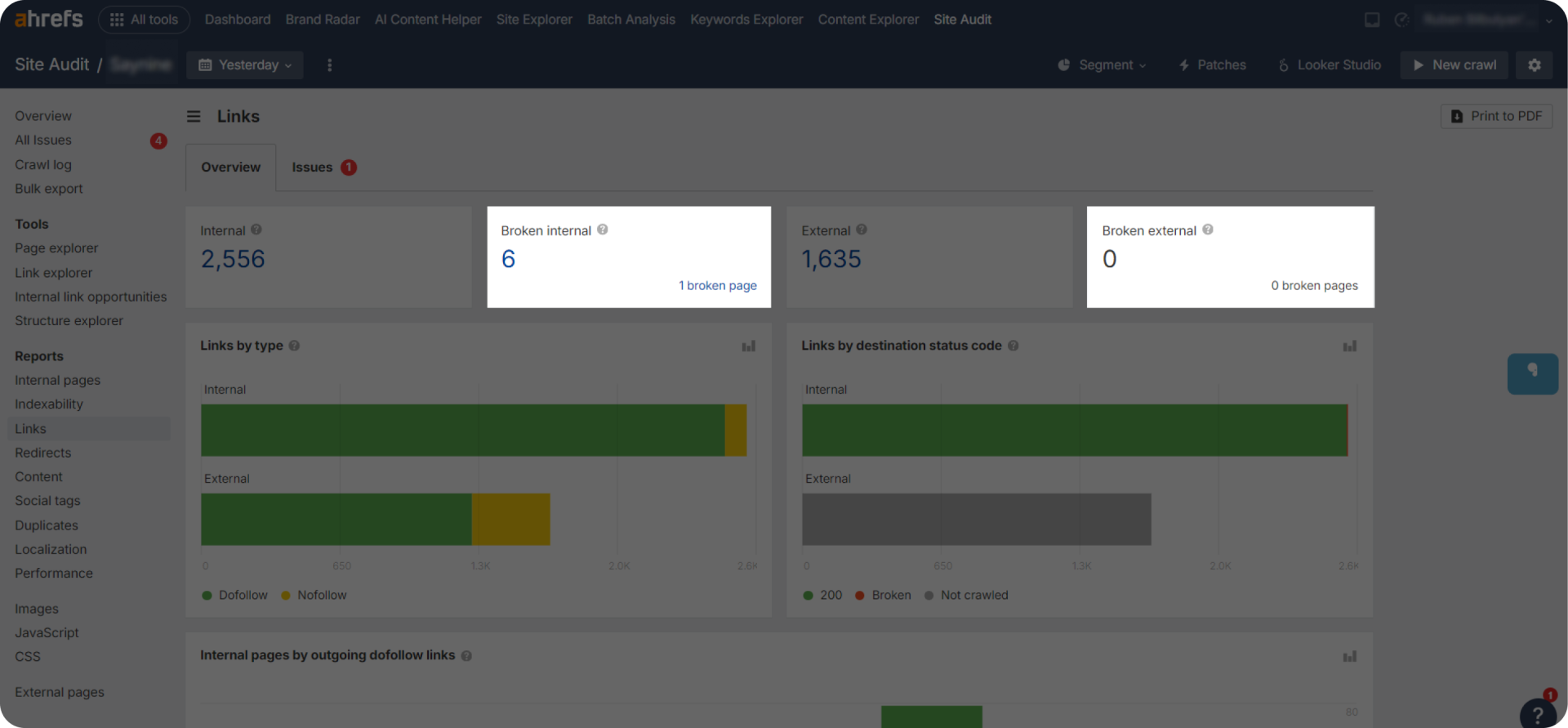
Oh, and if broken links are on your to-do list, we’ve got you covered. Our super simple guide shows how to find and fix them using Google Search Console and Screaming Frog. Check it out!
Further reading:
Broken Links: A Simple Guide for 2025
Fix 5xx Errors
5xx errors are server-side issues, meaning the problem is on your website’s server, not the user’s end.
If ignored, these errors can block search engines from crawling your site and hurt your visibility in search results.
Here are the most common ones:
- 500 (Internal Server Error)
- 501 (Not Implemented)
- 503 (Service Unavailable)
- 504 (Gateway Timeout)
You can track these easily with tools like Screaming Frog. As you can see, we’re in the clear on this one.
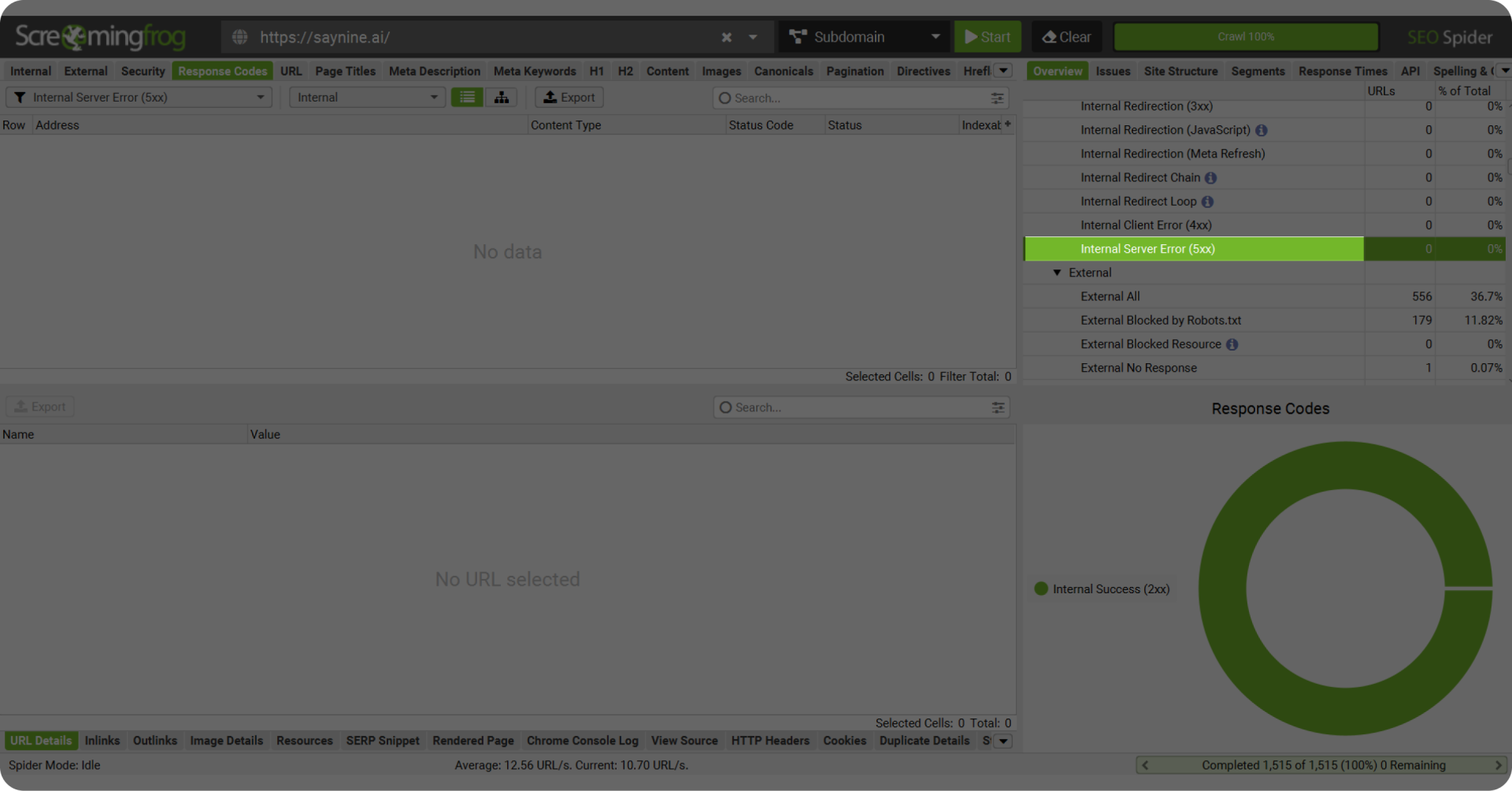
How to fix the issue?
- Send the list of issues to your development team to investigate and resolve them.
- Try restarting your server or hosting service if the error is ongoing.
Clean Up Redirect Chains
Redirects help users and search engines reach the right page when a URL changes.
But when multiple redirects pile up on each other [like Page A → Page B → Page C], it creates a redirect chain which leads to:
- Slower page load times
- Loss of link equity
- Increased user bounce rate
The bottom line? We recommend finding these redirect chains and fixing them as soon as possible.
We use Screaming Frog to fix redirect issues, and you can too.
- Crawl your site with the tool
- Go to the Redirection (3xx) section from the Overview
- Export the “Inlinks” to see which pages are linking to outdated URLs
The best fix? Use 301 redirects for permanent changes. Plus, always redirect to relevant pages.
We also wrote a full guide on redirects if you want the full picture. It’s useful, not boring. We promise.
Further reading:
Redirects: What They Are and How to Use Them
Implement Canonical Tags Properly
Canonical tags are pieces of HTML code that help search engines know which version of a page to index.
Here’s an example.
<link rel=”canonical” href=”https://domain.com/” />
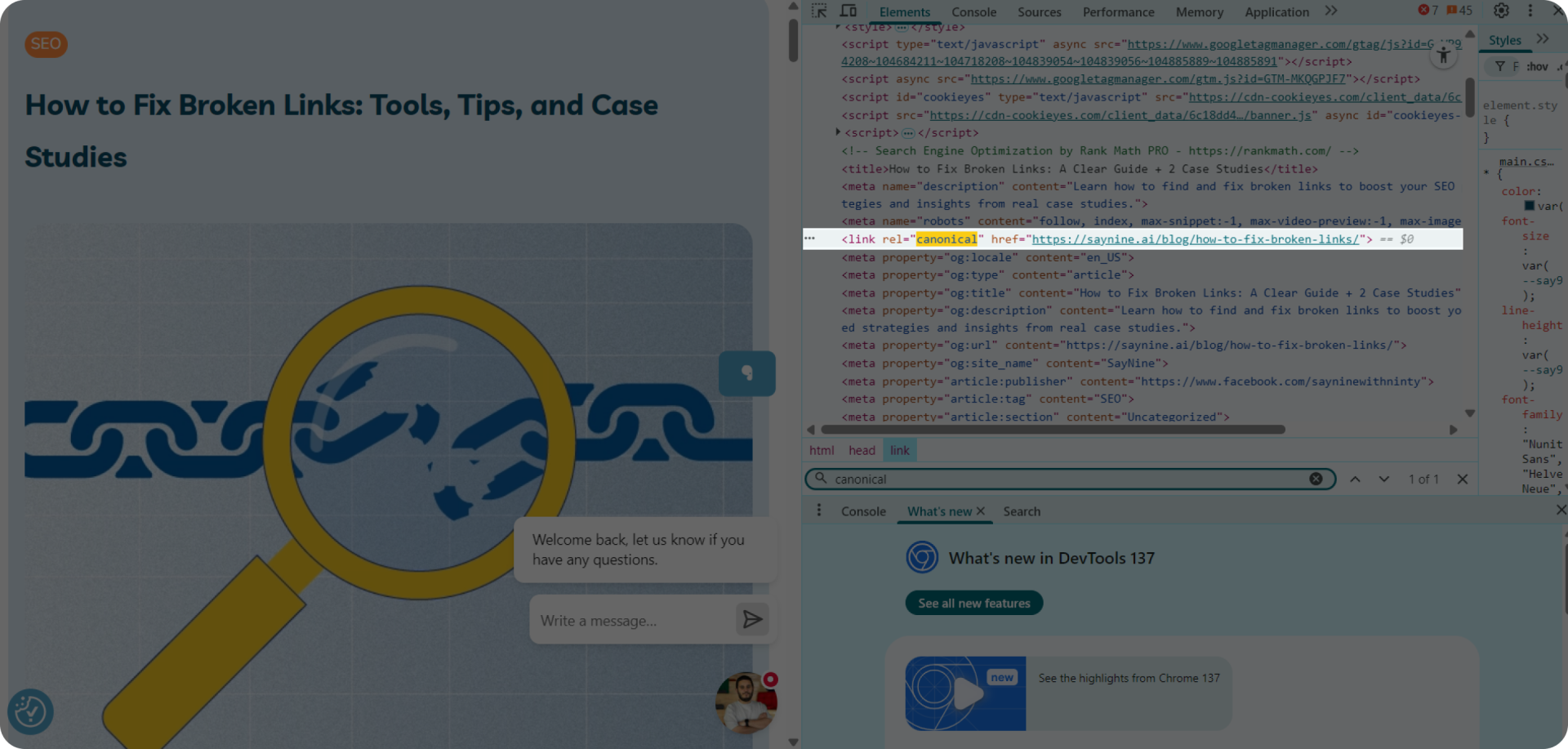
Why do they matter?
- They prevent duplicate content issues.
- They preserve link equity by directing SEO value to the right URL.
To find out whether you have canonical issues or not, use Ahrefs’ Site Audit tool.
Crawl your website and go to “Duplicate content.” As you can see in the screenshot, there’s no duplicate content issue, which means canonical tags are set properly.
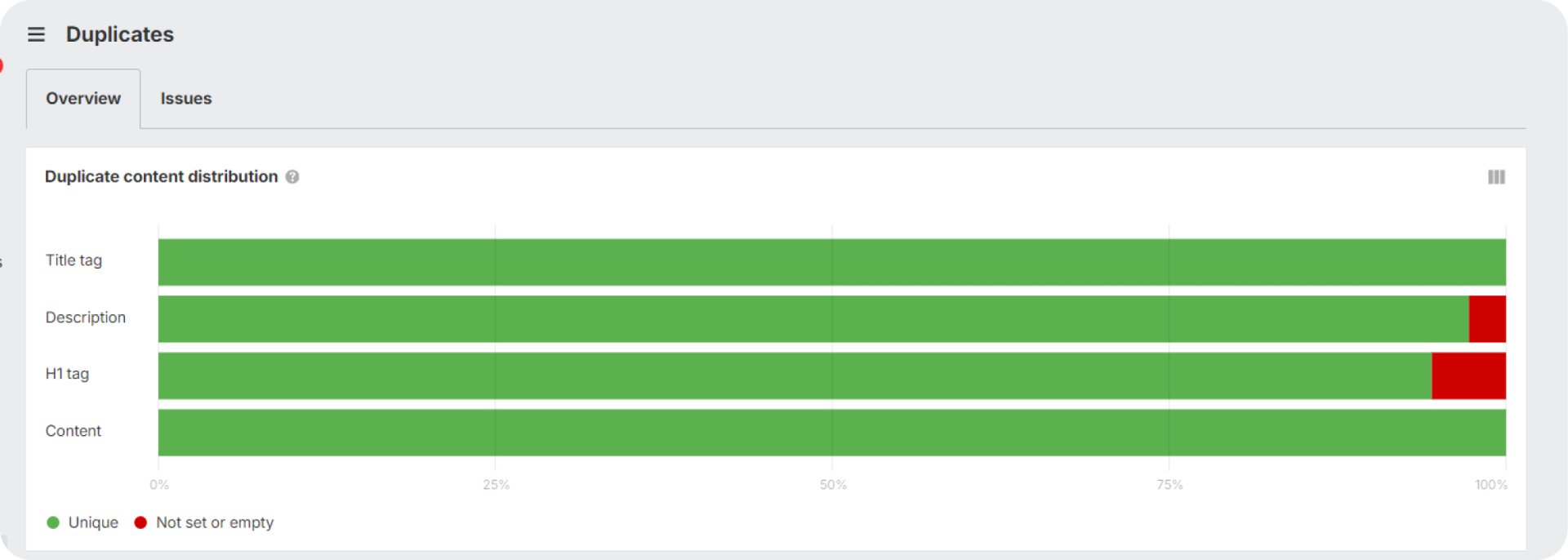
For more handy tips on using canonical tags the right way, check out our full guide.
Further reading:
Canonical Issues: How to Fix Them Like a Pro
Find and Fix Sitemap Issues
A sitemap shows Google all the important pages you want to be indexed, which helps your content get discovered faster and more efficiently.
Why it matters:
- Google uses your sitemap to understand your site structure
- It can help improve your crawl budget
- It supports better visibility for key pages
Here’s one simple way to check your sitemap:
Type yourdomain.com/sitemap.xml into your browser. If it loads, great. If not, that’s something to fix.
But that’s just one method. There’s more to keeping your sitemap clean and useful, and a few ways to check if Google’s even looking at it.
We go over all that in our full guide. Find it below!
Further reading:
The Complete Website Audit Checklist
Website Structure & Navigation
Improve Internal Linking and Fix Orphan Pages
Internal links are links from one page to another page on your website.
Here’s a quick reality check:
- If your best content has no links pointing to it, it probably won’t rank.
- Orphan pages (those with no internal links pointing to them) often never get indexed.
Want to make your internal linking smarter? We recommend
- Focusing on linking related content naturally.
- Avoid overdoing. A few naturally placed internal links go further than a bunch of ones thrown in randomly.
Fixing orphan pages and auditing internal links is not as challenging as it seems. We use handy tools and a simple process to clean things up fast.
Want to learn how we do it? Check out the full guides for more details.
Further reading:
Internal Linking: Best Practices for 2025
Orphan Pages: How to Find and Fix Them
Use a Clear URL Structure
A URL structure is the format of your web address.
A messy, confusing URL can turn users away and make it harder for search engines to understand what your site is about.
Here’s what we recommend to keep your URLs clean and SEO-friendly:
- Keep it short and simple. Unnecessary parameters just confuse everyone.
- Include your primary keyword in the slug [that’s the part after the slash].
- Avoid using dates or numbers. As content can get updated, you probably don’t want the link to suggest it’s old.
- Use hyphens, not underscores.

Site Speed & Mobile Friendliness
Test and Optimize Page Load Speed
Page speed is a ranking factor, and it’s a ranking factor for mobile searches too, since 2018, introduced by “Speed Update”.
In short, a technically well performing website should also work faster, if you want better rankings and improved user experience.
To check your page speed, you can use Google’s PageSpeed Insights tool.
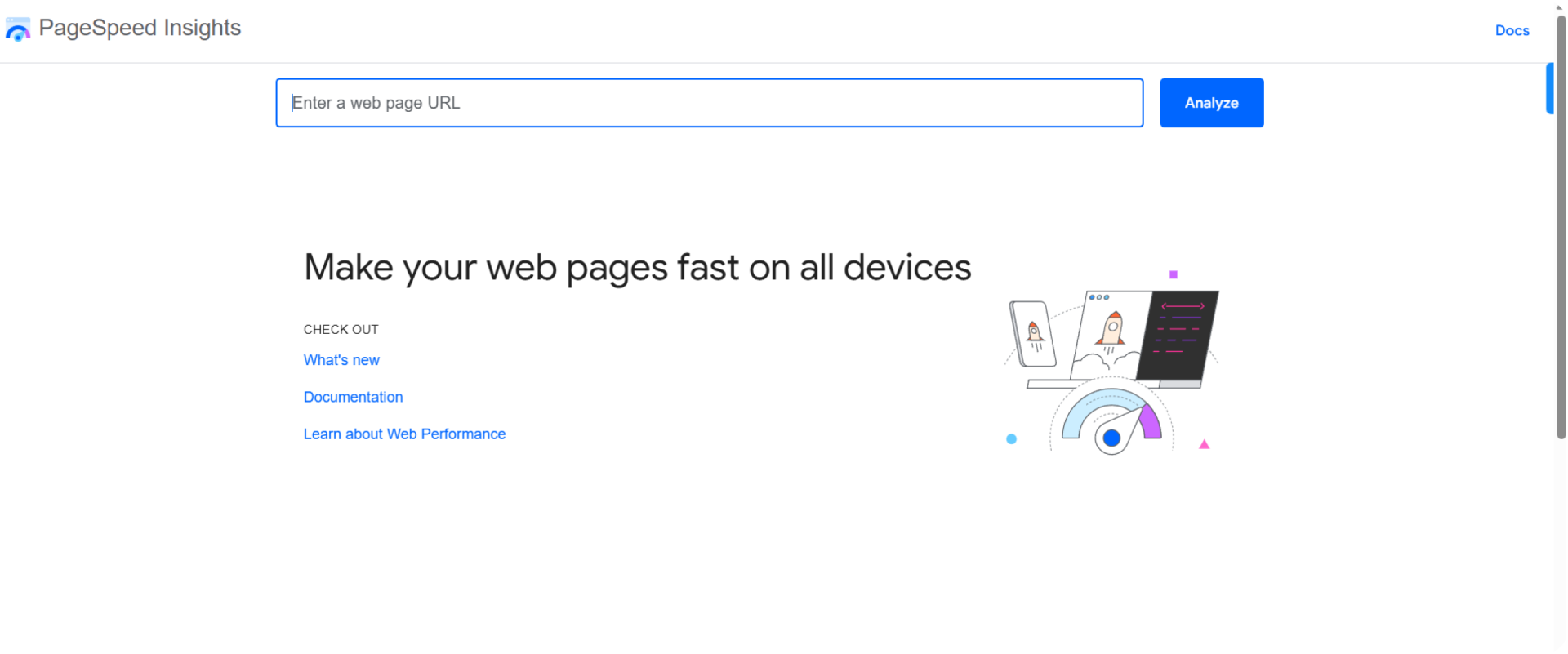
One crucial area to focus on is Core Web Vitals, which Google uses to rank pages. These metrics directly impact how visitors experience your site:
- Largest Contentful Paint (LCP) measures how fast your main content loads.
- Interaction to Next Paint (INP) measures how quickly your site responds to user actions.
- Cumulative Layout Shift (CLS) tracks unexpected layout shifts that annoy users.
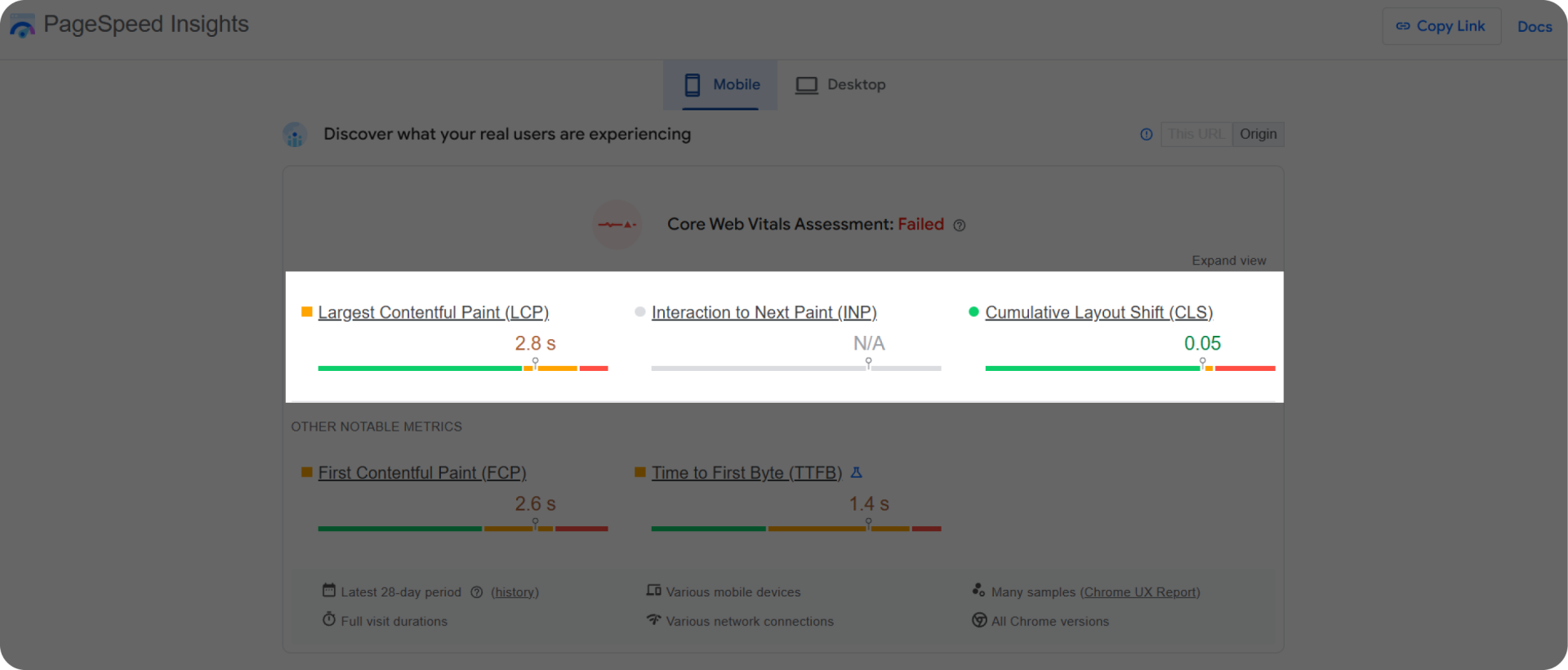
By scrolling down, you can find detailed insights as well as recommendations on how to improve your page speed across different devices.
Optimize Visuals Across Devices
Adding visuals to your content is not only good but a must.
However, it’s easy to overlook the optimization part and add heavy or large images and videos that can actually hurt your SEO.
So, what we recommend is keeping things light and responsive:
- Compress your images before uploading to avoid slow-loading pages.
- Use the right formats. We usually use WebP for optimal web performance.
- Always add alt text for accessibility and better indexing. Keep it under 100 characters.
- Test visuals on mobile. What looks great on a desktop might slow things down on smaller screens.
Structured Data
Structured data or schema markup is a small piece of code that helps search engines understand what your content is about.
Add it right, and you can enjoy benefits like:
- Rich results [star ratings, images]
- Faster indexing by Google
- Better visibility against competitors
However, you don’t need structured data on every page. Focus on high-impact content such as blog posts, product pages, or services. And always validate your markup before hitting publish with a tool like Schema Markup Validator.
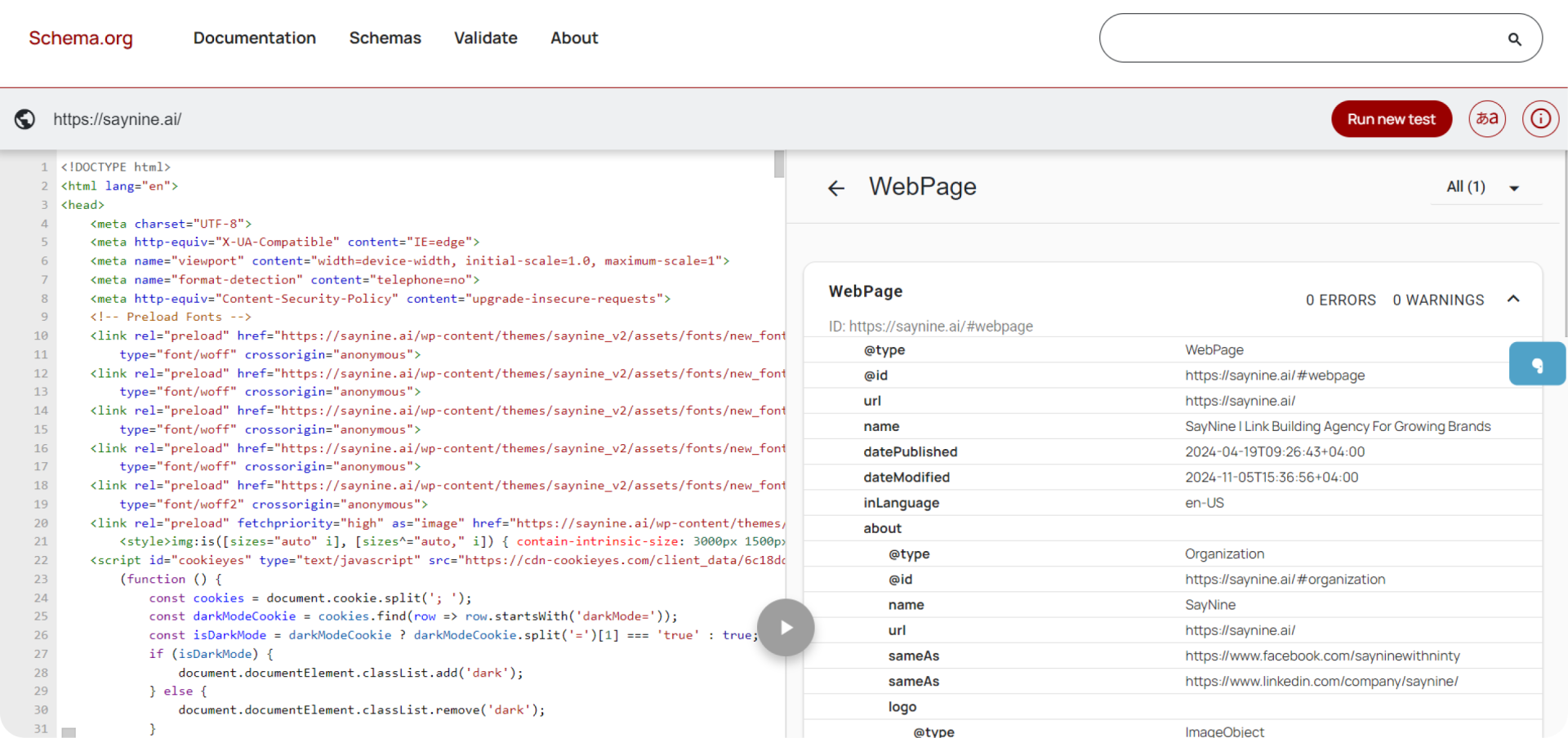
Plus, always check structured data issues with a technical SEO audit tool like Ahrefs. All you need to do is:
Step 1: Go to Ahrefs’ Site Audit tool and crawl your site
Step 2: Head to “All issues” and find schema and validation errors.

As you can see, here we don’t have any issues with structured data. However, in case you detect one on your website, you can always investigate the problem by opening the URL details panel on Ahrefs.
Further reading:
What is Schema Markup & How to Implement It
HTTPS & Security
HTTPS [Hypertext Transfer Protocol Secure] is what keeps the connection between your website and your visitors safe. It ensures that any data exchanged is encrypted and protected from third parties.
To check if your site is secure, just click the padlock icon next to your URL. If it says “Connection is secure,” you’re safe.

So, why is it important? Because Google uses HTTPS as a ranking factor. Apart from building trust with users, it also helps your pages perform better in search.
Pro tip: Make sure your SSL certificate is active and renew it before it expires.
Final Thoughts
Great content and backlinks matter, but if your site has technical problems, Google won’t show it to people.
Slow pages, broken links, or messy structure can negatively affect your SEO. That’s why running regular technical checks and fixing issues is so important.
Use the checklist we shared to keep your site healthy. And hey, if you’re too busy, no worries. We’ve got you covered with full SEO services, including technical audits. Just let us handle it!
FAQ about technical SEO checklist
What’s included in technical SEO?
Technical SEO covers things like site speed, mobile-friendliness, crawlability, indexing, and other aspects that affect how search engines access and understand your site.
How to check technical SEO score?
Use tools like Ahrefs, SEMrush, Screaming Frog, or Google Search Console to run a site audit. They’ll give you detailed insights on your technical performance and a list of issues to fix.
Are backlinks technical SEO?
No, backlinks fall under off-page SEO. Technical SEO focuses more on how your site works.
